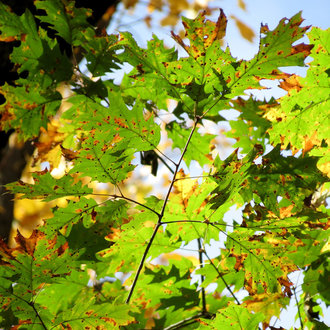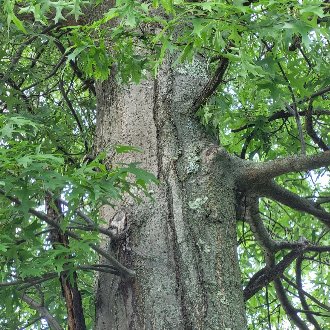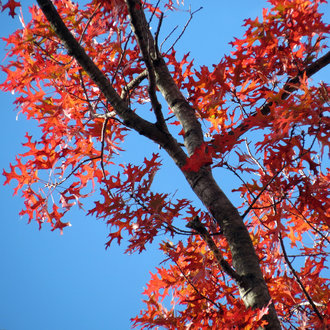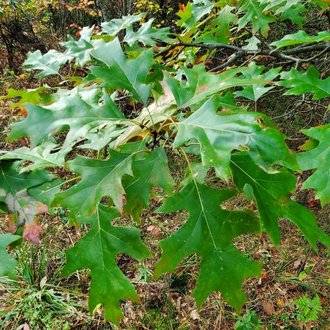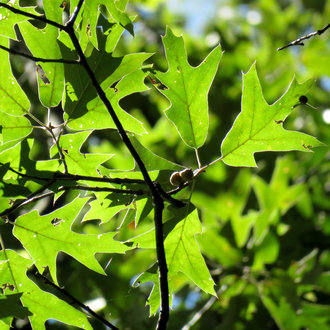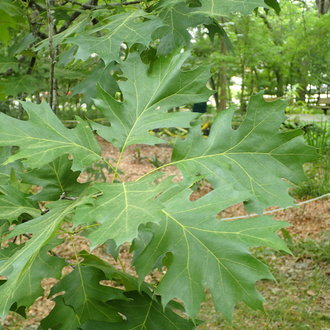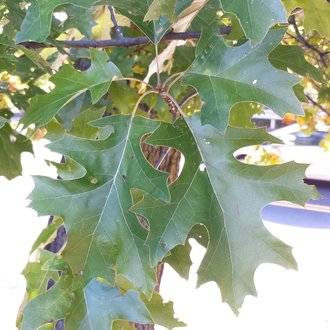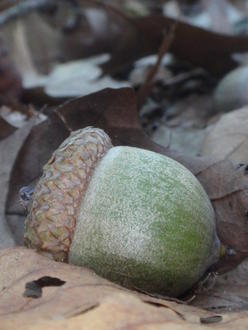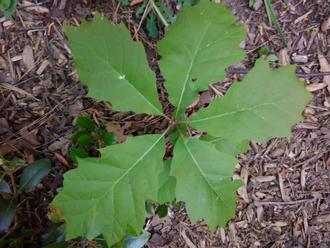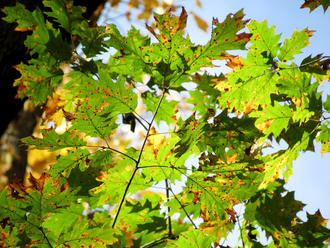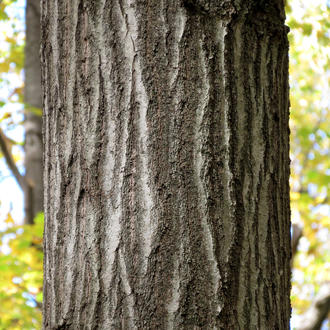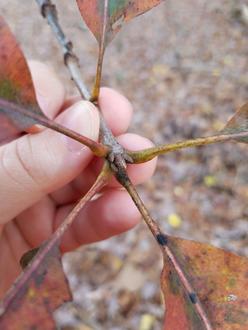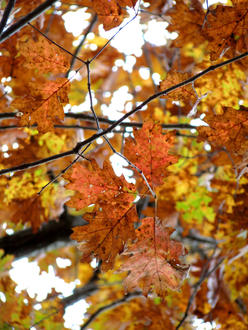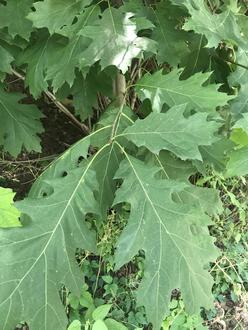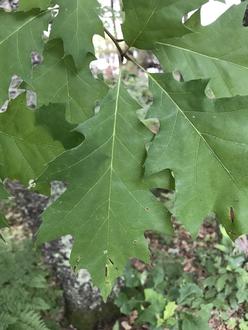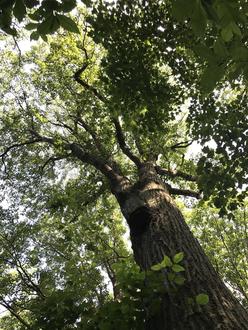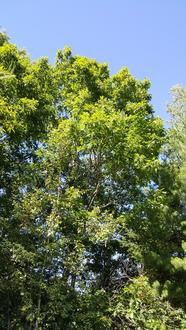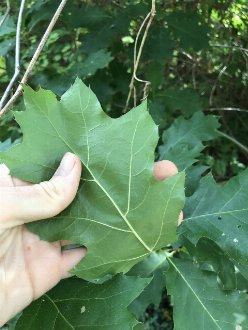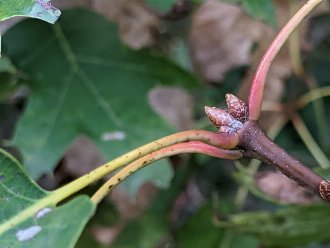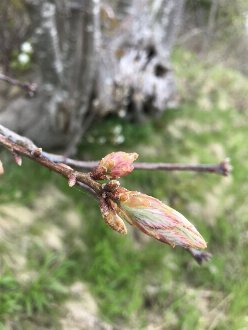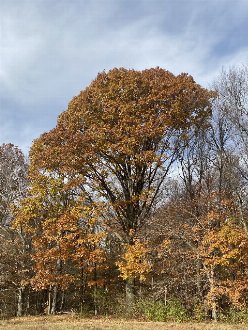Northern Red Oak (Quercus rubra L.)
Also known as red oak; also classified as Quercus borealis.
↑Summary
A large tree, one of the dominant components of the forests of eastern North America, native to a wide range of the northeastern U.S. and Canada, extending well into the south.
↑Range - Expand
| Legend | Color |
| Native | |
| Native or Not Present | |
| Introduced or Not Present | |
| Introduced | |
| Garden Persistent |
This map is based on our research. We have checked its accuracy to Level 3 ecoregions. Although this plant occurs somewhere in each of these regions, it may only occur in a small part of some or all of them.
↑Similar Plants
↑Habitat
Found primarily in forests, and is a dominant tree or major component of many forest types, and occurs as scattered individuals in many more; it occasionally forms pure stands at high elevations in the southern and central Appalachians, where it likely replaced the American chestnut (Castanea dentata) that it used to co-occur with. Less frequently, but occasionally found in partly-open habitats such as savannas, forest edges, and rock outcroppings. Most common in rich, mesic woods, especially on locally cool and sheltered sites, and also found in well-drained portions of floodplains.
Typically found in mesic to dry-mesic conditions, and generally requires good drainage, although mature trees can tolerate sites that flood rarely and drain quickly (within hours.) Found on a range of soil types, including clay, loam, sandy, and gravely soils, ranging from rocky and shallow to deep and free of rocks. Best growth occurs on deep, well-drained loam to silt-loam. Although it can survive on rocky, sandy, or very thin soils, many habitats with these soils are too dry or fire-prone for this species.
Found in a broad range of climatic conditions, with growing seasons ranging from 100 to 220 days. Tolerates climates with as little as 30 inches of rain annually in the north of its range, but it does not range much farther west than the 40 inches of rain cutoff in the south of its range, and it grows in areas with up to 80 inches of rain in the southern Appalachians. Mostly limited to areas with mean annual temperatures below 16° C (60° F.)
Although some sources have described this species as less shade-tolerant than white, black, or chestnut oak, more sources suggest that this species is the most shade-tolerant of all North American oaks. It is the most likely oak seen growing alongside highly shade-tolerant trees including sugar maple, basswood, beech, and hemlock. These other oaks are typically favored over this species only by drought or fire, not by shade.
Slightly less fire-tolerant than most oaks, but mature trees still exhibits many adaptations to fire and in many regions, tends to be replaced or removed from forests that never burn.
Found on all slope aspects, but in most of its range it grows best on north-and east-facing slopes, and also on coves, deep ravines, and well-drained sites on valley floors. In the southern part of its range, it is often limited to such sites.
Humans have increased the habitat for this oak through fire suppression, and through introduction of the chestnut blight which killed off the American chestnut and opened its niche for this and other oaks to take over.
↑Life Cycle
Seeds germinate in spring, after a period of cold dormancy, and germinate underground, usually after being buried by squirrels or other animals. Dormancy requirements can vary by individual acorn, but is rarely delayed longer than one winter season. Germination is best when covered by leaf litter, and is poor on the surface.
As with many oaks, seedlings often die back to the ground but their root system remains alive.
Trees usually begin producing seed at around 25 years of age, rarely as soon as 10 on favorable sites, although seed production is usually sparse until trees reach about 50 years old. Good seed crops are produced every 2-5 years. Flowers are wind-pollinated, and cold, rainy weather during flowering can reduce seed production.
In years of low seed production, the entire seed crop is typically consumed by animals; reproduction usually only occurs in years of peak seed production.
Trees, especially younger ones, can resprout in response to fire or mechanical damage.
↑Faunal Associations
The large acorns are eaten by squirrels and other mammals, as well as larger birds.
↑Uses
Frequently used in landscaping as a large shade tree, and occasionally as a street tree. Valued for being easy to grow and tolerating pollution and drought, but does not tolerate soil compaction as well as some trees. Like other oaks, it is less likely to heave sidewalks than other equally large trees.
It has been used successfully to rehabilitate disturbed sites, including acidic sites with coal mine spoils, where it has the advantage of tolerating some acidity.
An important source of lumber; its wood is heavy, hard, strong, and coarse-grained and porous. Like other red oaks, its resistance to insects and rot is poor, especially relative to white oaks. One of the most widely used types of wood in North America.
The wood also has a high heat content and makes excellent firewood.
↑Related Plants
Closely related to all oaks of the red oak group. Within this group, it is likely most closely related to texas red oak (Quercus buckleyi), shumard's oak (Quercus shumardii), and mapleleaf oak (Quercus acerifolia), followed by black oak (Quercus velutina), jack oak (Quercus ellipsoidalis), and scarlet oak (Quercus coccinea).
It hybridizes readily with other oaks of the red oak group, and numerous natural hybrids exist, governed less by closeness of relations and more by overlap of range and bloom period.
↑Notes
This oak has become an invasive species across much of Europe as well as in New Zealand.
↑Links & External Resources
• Red Oak | The Wood Database (About This Site)
• Northern Red Oak | Fire Effects Information System (FEIS) (About This Site)
• Quercus rubra (Northern Red Oak) | Illinois Wildflowers (About This Site)
• Quercus rubra (Northern Red Oak) | USDA PLANTS Database (About This Site)
• Quercus rubra | Go Botany (About This Site)
• Quercus rubra (Red Oak) | Missouri Botanical Garden Plant Finder (About This Site)
• Northern Red Oak | Virginia Tech Dendrology Factsheets (About This Site)
• Northern Red Oak | Silvics of North America (About This Site)
• Quercus rubra | Biota of North America Project (BONAP) (About This Site)
• Quercus rubra | NatureServe Explorer (About This Site)
• Quercus rubra | Flora of North America (About This Site)
• Northern Red Oak | Maryland Biodiversity Project (About This Site)
• Quercus rubra Linnaeus var. rubra (Northern Red Oak) | Digital Atlas of the Virginia Flora (About This Site)
• Quercus rubra L. var. borealis (F. Michaux) Farwell (Northern Red Oak) | Digital Atlas of the Virginia Flora (About This Site)



